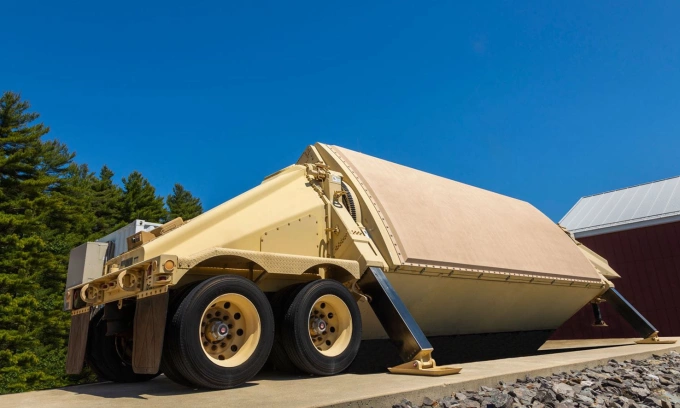U.S. Military Receives Upgraded Radar Designed to Track Hypersonic Missiles
The U.S. Missile Defense Agency has officially taken delivery of an advanced version of the AN/TPY-2 early warning radar, a system now enhanced with cutting-edge technology to help counter hypersonic missile threats.
Raytheon, the defense contractor behind the system, announced on May 20 that it delivered the first upgraded AN/TPY-2 radar fully equipped with gallium nitride (GaN) transmit-receive modules. GaN is a high-power semiconductor material that significantly boosts radar performance—offering greater sensitivity and the ability to detect targets at roughly twice the range of earlier models that used gallium arsenide.
According to Raytheon, the upgrade enhances the radar’s sensitivity, detection range, and tracking capability. While specific performance specs were not disclosed, the company emphasized that the new radar is capable of detecting hypersonic missiles in addition to its traditional role of tracking ballistic missiles throughout their flight phases.
The updated radar also features Raytheon’s high-performance CX-6 software, which allows for more accurate target discrimination and improved resistance to electronic warfare tactics.
The AN/TPY-2 is a core component of the U.S. Army’s Terminal High Altitude Area Defense (THAAD) system, one of the most advanced missile defense platforms in service today.
Globally, defense contractors are increasingly investing in GaN-based technologies. Raytheon, for instance, began producing the Lower Tier Air and Missile Defense Sensor (LTAMDS) last year for the U.S. Army. This next-generation radar—intended to replace the current Patriot system’s fire control radar—also utilizes GaN components to enhance performance.
For years, U.S. defense officials have pushed for improved capabilities to counter hypersonic threats, as both Russia and China have fielded operational hypersonic weapons.
Hypersonic missiles travel at speeds of at least Mach 5—five times the speed of sound, or over 3,800 mph (6,200 km/h). Unlike traditional ballistic missiles, they fly at lower altitudes within the atmosphere and can maneuver mid-flight, making them much harder to detect, track, or intercept. Their high speed and unpredictable trajectories give adversaries little time to respond or launch countermeasures.
The race to counter this next-generation threat is now shaping the future of missile defense worldwide.
(Sources: Business Insider, Bulgarian Military)



